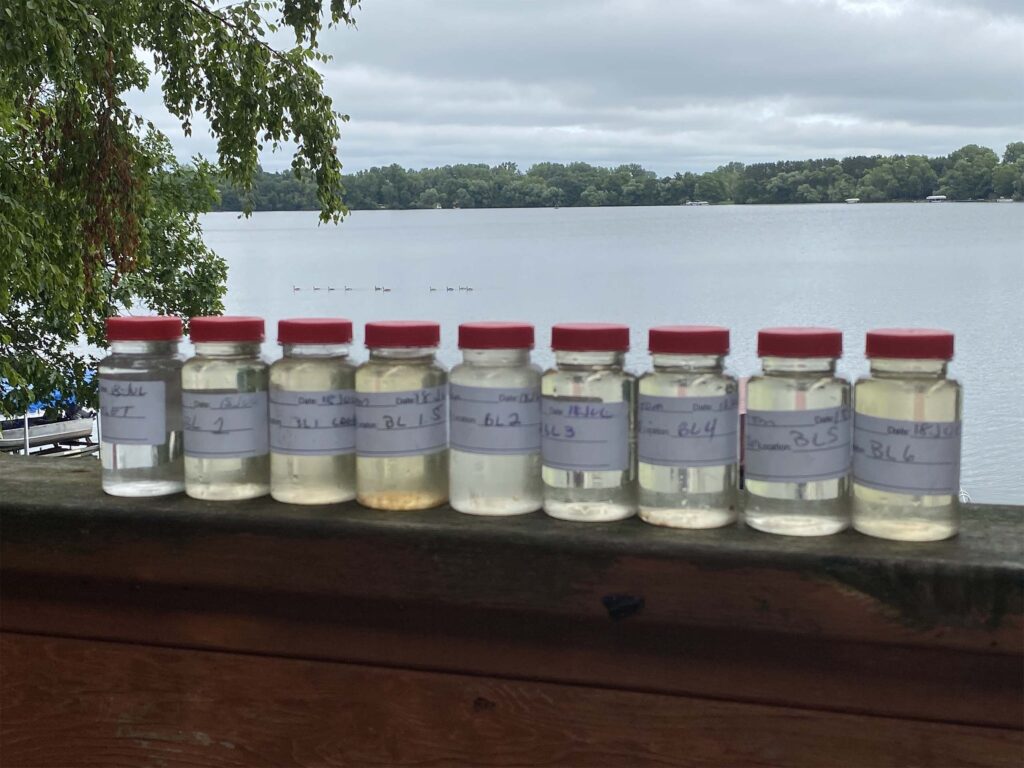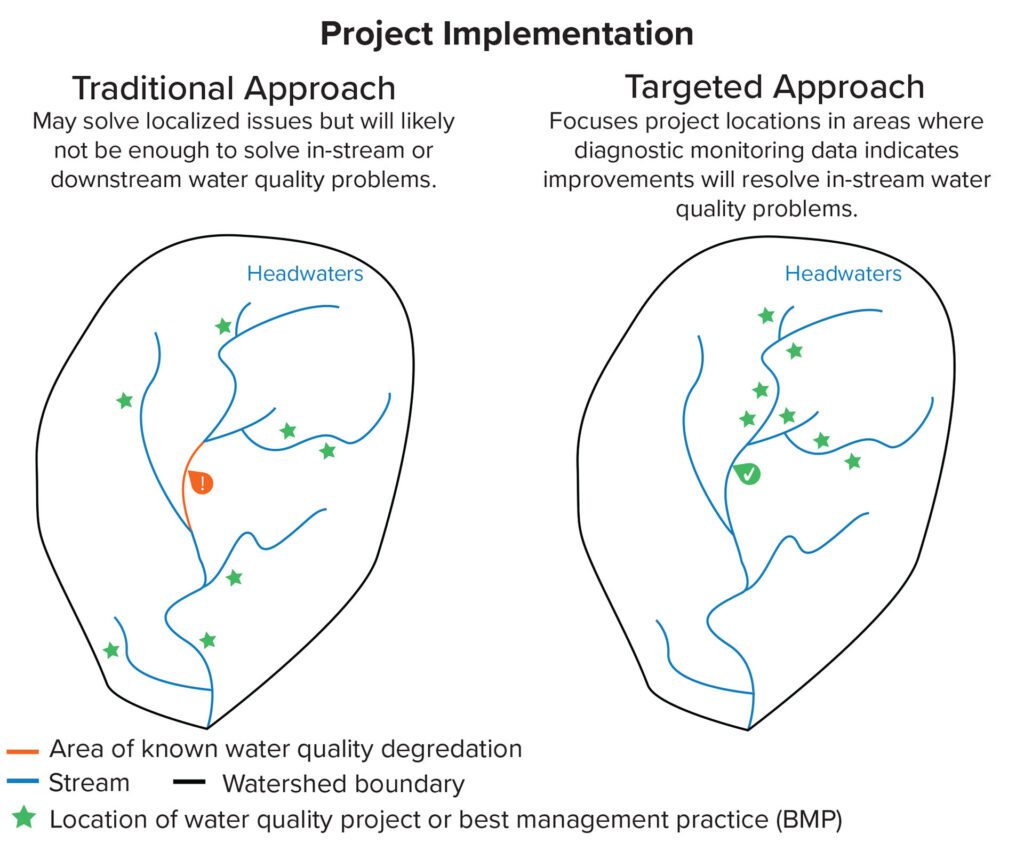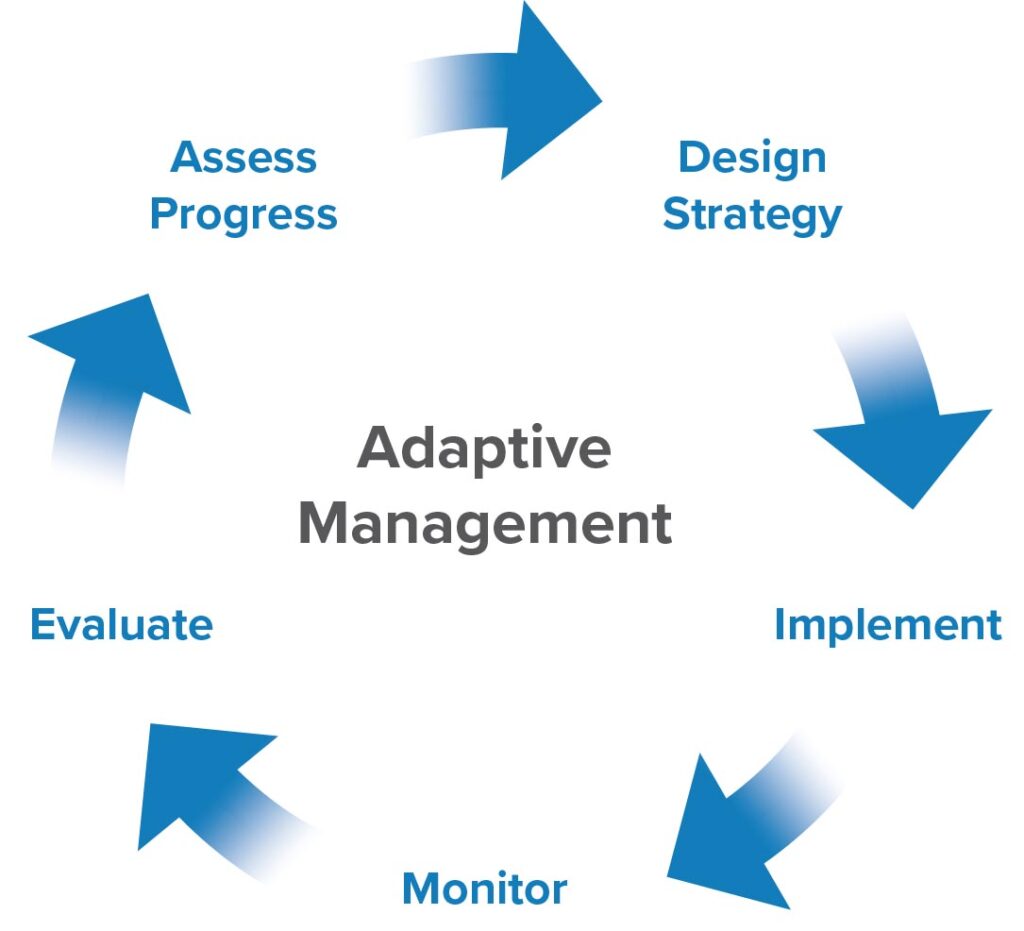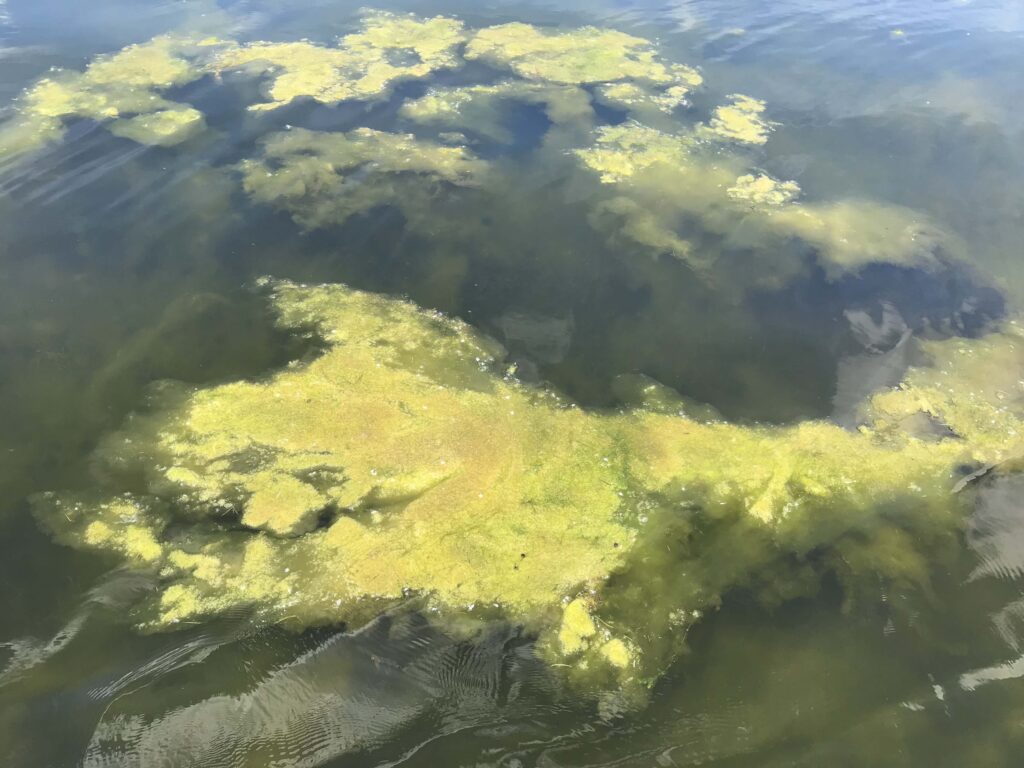Water monitoring is a crucial aspect of the District’s adaptive management approach. Diagnostic monitoring is a specific type of water monitoring that focuses on locating contaminate sources across the watershed.
Diagnostic Monitoring
The purpose of diagnostic monitoring is to determine the specific causes of nutrient impairment to surface water and to quantify input and load of these contaminants to a specific waterbody. Common causes of waterbody impairment include urban development/paved surfaces, agricultural activity, erosion, and degraded wetlands. All of these land uses can cause nutrient loading or contamination in nearby waterbodies. Diagnostic monitoring is also used to determine the actions needed to return an aquatic resource to a condition that meets standards and goals. The District’s diagnostic monitoring activities focus on sub-watersheds, tributary streams, and degraded wetlands to identify pollutant hotspots.
In its never-ending quest for improvement and efficiency, the District also explores new technologies and strategies to streamline the diagnostic monitoring process, saving taxpayer dollars. In 2020, the District employed low-cost monitoring technologies and developed a new monitoring strategy to supplement and inform its current diagnostic monitoring program. This new volunteer-based monitoring strategy is known as the Citizen Assisted Tributary (CAT) monitoring program and was awarded “Program of the Year” by the Minnesota Association of Watershed Districts. You can learn more about the District’s focus on diagnostic monitoring in the 2022-2031 Watershed Management Plan and more about the CAT program on the Get Involved page.








